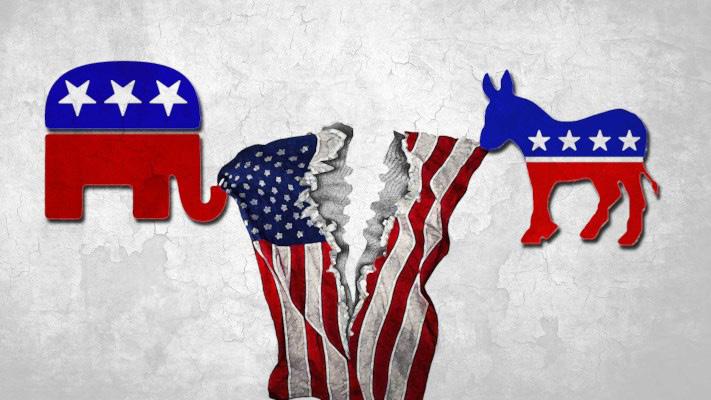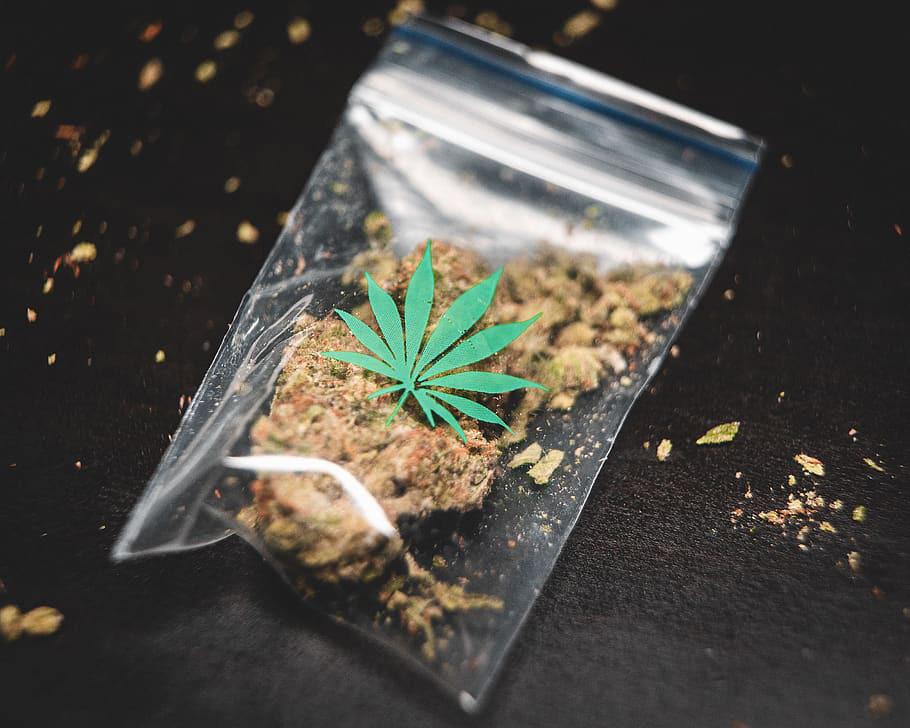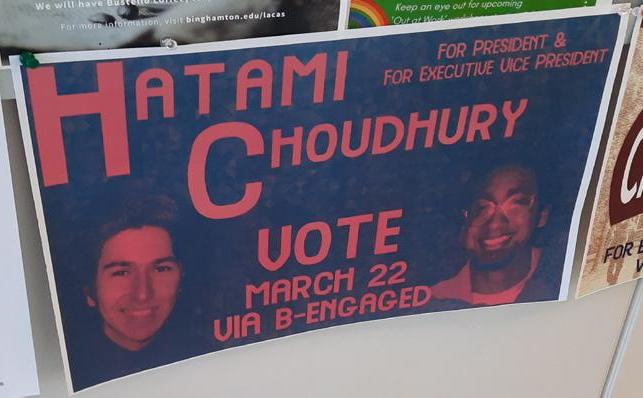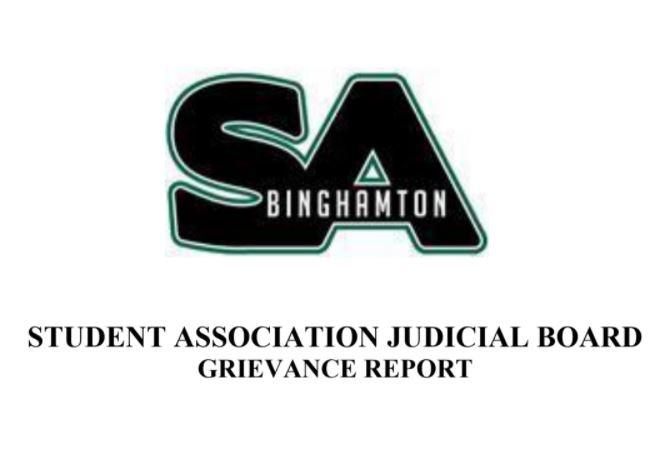
16 minute read
Why I Lack Optimism For Post-COVID by Arthur O’SullivanAmerica
Why I Lack Optimism For PostBy Arthur O’Sullivan COVID America
This past Easter, I had the good fortune of being able to come home and celebrate the holiday with my politically-divided family. The men in the family tend to be varying shades of conservative; the women tend to be varying shades of liberal. We get along well despite this, and we had a mostly peaceful Holy Week, with the exception of one day, which saw a rather explosive argument about COVID-19 vaccine passports and their statewide/ national implementation. Though I, being a conservative, hated the concept, the rest of my family were either willing to tolerate it or even support it, so long as it meant being able to go back to “normal”. In the course of the quarrel, my more liberal family members found themselves surprised by how supposedly “right-wing” I had become, and I likewise found myself surprised at how seemingly acquiescent they had become to what I called “creeping authoritarianism.” We traded these harsh words, though they hurt significantly more than they helped our rhetoric. We each left the fight shaken by the deep emotions we stirred, with our beliefs ultimately unchanged. After taking some time to cool off, realize that the day was beautiful, we each apologized to each other and decided to respect each other’s positions, and proceeded to have an otherwise pleasant Holy Week.
Advertisement
Now, why am I telling you this, dear reader? I’m not just treating you like a stand-in for a Freudian psychoanalyst; I’m telling you this because I believe this story exposes a deep fault-line in American society that developed as a result of the COVID-19 pandemic. I believe that the root of my family’s disagreement, and likely much of America’s disagreement, boils down to how each of us answer following question:
Is it better for the government to have gone too far in dealing with the COVID-19 pandemic, as opposed to not having gone far enough?
In asking that question, many alms to the poor. I mean the virtue of charity, where one assumes the good faith of the other in any interaction, especially a political dialogue. For the left to be charitable in this context, this means not believing that the right is endorsing “killing grandma” when opposing lockdowns. For the right, this means not believing that the left wants to see America adopt an authoritarian regime. It is obvious that charity is foundational to any functional system that involves interaction between people that disagree.
Charity, however, is increasingly hard to come by these days. It has become a truism among the remaining political moderates to bemoan the divided state of American discourse, especially on Twitter. As I write, #DeathSantis is trending due to a 60 Minutes hit piece that portrayed Florida’s governor in a very negative light. It’s clear that the left has no interest in dealing with their opponents charitably, rather hoping to feel virtuous by portraying anti-lockdown Republicans as if they are all in a “death cult”, as is apparent in left-wing media (i.e. the Washington Post, the New York Times, CNN, etc.). Though I am a conservative that happens to like Governor DeSantis, I do not want to see people die from COVID. An ounce of charity would make that seem obvious. I also do not dismiss the root of the support for lockdowns and vaccine passports. I believe that the desire to preserve vulnerable life is objectively noble, and I do not doubt that many on the left genuinely think that these things save
things suddenly click into place. One can now see the arguments for both sides much clearer: the left, as of now, seems to prefer that the government should go too far in extending its power, so long as it saves vulnerable lives from a dangerous disease. The right, likewise, seems to prefer that the government be limited, so long as it keeps America from embracing the potential tyranny that results from crises like these. These are broad generalizations, and there are many on the left and the right who are less eloquent in expressing their ideas. My family members and I were exemplars of that lack of eloquence in our own bitter argument. However, this does not negate the fact that there are solid arguments from both views, and that a productive discourse would see both sides engage each other with charity. When I say “charity,” I do not just mean giving

lives. My concern is that this position has been twisted by left-wing cultural institutions into a pervasive belief that the right somehow has no qualms about discarding life in the name of an ill-defined concept of “liberty”. After all, how can one be free when dead? This warped perspective is only generated in absence of charity for the opposite side.
A similar lack of charity exists on the right, though it operates in a different manner. While the left sources its
vituperative hatred for the right from the dominant cultural, political, and scientific institutions, the right derives its hatred for the left from a skepticism towards these same establishments.
To be fair to the right, left-wing ideology undeniably dominates these institutions, with students more likely to encounter leftist values in university, to there being no mainstream media aimed at objective reporting. Not to mention the absurd self-contradictions coming from the scientific establishment about COVID-19 and its spread. Take the bizarre “scientific” apologia for the BLM protests/riots, for instance, where the ScienceTM assured their liberal readers that the riots did not cause the summer spike in cases, but that anti-lockdown or pro-Trump rallies were simultaneously super-spreaders. Alternatively, take Dr. Fauci’s flip-flopping on double masks, oscillating between saying that wearing two masks was “just common sense” to there being “no data to support double-masking,” and then proceeding to say that mixed messaging from the Trump administration caused unnecessary deaths without a hint of irony in his voice.
Despite fairly legitimate grievances against the establishment, much of the right has lost credibility by swinging too far in the opposite direction. Skepticism towards the dominant cultural beliefs about the pandemic can quickly go from reasonable dissent to unreasonable hatred. Many on the right, likely radicalized in their isolation, shift the narrative from moderate ideas like “lockdowns are ineffective and destructive” to extreme ideas like “lockdowns and their supporters are categorically evil and means for Fauci, Biden, and (((them))) to gain power.” The left-wing establishment can then portray those who propound the former idea as actually dog-whistling for the latter, which furthers the gulf between moderates on the left and right who might otherwise be able to have a reasonable argument about the pandemic response.
This widened gulf manifested itself in my fight with my family: I, a conservative who was concerned about the potential authoritarianism a “vaccine passport” would invite, sounded to the left-wing members of my family like the “anti-maskers and anti-vaxxers” they see on social media. Likewise, my family members sounded to me like people in totalitarian states who would tolerate authoritarianism for the sake of convenience and a feeling of security, as that was the image I had unconsciously formed in my head of people who supported vaccine passports. Fortunately, because we were living under the same roof, with the same blood flowing in our veins, we were able to gain sympathy and respect for each other and our views, despite the depth of our disagreements, and reconcile quickly and easily.
Unfortunately, I can’t say the same for the country, which often lacks the deep familial bonds between red and blue. I see no clear solution, as the usual way to solve political division is through direct charitable interaction with those of the other side. Sadly, the relegation of social interaction to the virtual world in this pandemic has largely closed off that route. With the nature of vaccination itself becoming political as the radical left pushes for essentially mandatory vaccines, and the radical right refuses to even get vaccinated, I’m beginning to fear that hope is lost.
I fear that the left-wing establishment will continue to “combat domestic extremism,” that is, suppress the right and the “inconvenient left” (i.e. anarchists, communists etc.), through institutions such as education, corporate media, federal legislation, and executive orders. I fear that the right will radicalize in reaction, only furthering the vicious cycle of American division while our geopolitical enemies in China, Iran, and Russia muster. Whether this will continue into a civil war or a collapse, I am less sure. America has faced existential crises before and has always managed to rebound as more resilient. I hope that, despite my gloomy outlook, my eighteen-year-old self will be proven wrong and look like an idiot. However, in the short term at least, I do not believe that we will come out of this pandemic stronger.


Bill 420 Blaze It: Is It Dope?
By Julius Apostata
Heeeeyyyy, man! Did you, like, hear the totally awesome news? Of course you have, because, like, it’s just that FAR OUT! Like, you know how we would always have to go to the nature preserve to hit up a blunt? Well, we still probably have to do that to get high anyway, but guess what? WEED HAS OFFICIALLY BEEN LEGALIZED IN NEW YORK! We have officially reached NIRVANA, man! *Ahem*, bad stoner jokes aside, this is actually the case; on March 31st, New York became the sixteenth state to legalize the use of recreational marijuana, with Governor Cuomo signing the legislation to make it law. Naturally, there is a lot to celebrate with this law, yet despite quite a lot of good things to come out of this, there are still some challenges that have arisen that we should consider. So, I plan on breaking down the good, the bad, and the ugly when it comes to this new legislation. What will this law look like in practice, and how will it affect consumers and New York State residents?
Although the bill, Senate Bill S854A, was first created on January 6th, 2021, several interactions of the bill have previously existed and have put forward to New York legislation, with the earliest bill (S6005) having first been introduced on December 11th, 2013. In spite of this, and having to go through a series of minor changes, the core tenets of the bill are still the same. Firstly, the use of recreational marijuana is now legalized for use amongst adults aged 21 or older. So long as the person is of legal age, they are permitted to carry up to 3 ounces of marijuana on their person (considerably more compared to other legalized states) as well as a total of 5 pounds kept safely in their place of residence. The bill also makes attempts to treat public consumption of marijuana similar to tobacco; state and local governments have the ability to designate smoking zones for marijuana, while simultaneously levying fines of 25 dollars to those in violation of the policy. The law also permits the growing of marijuana plants in one’s home, with someone being able to have up to twelve plants per household. Perhaps most impressively (and admirably) is how this law will affect past criminal records for marijuana-related conduct: such crimes will automatically be expunged from the person’s criminal record. Now that’s what I call far out!
Of course, not everything to come from this is necessarily perfect. Obviously, this doesn’t change how marijuana is perceived at the federal level; while New York now allows for recreational marijuana use, that isn’t necessarily true for the federal government (though there are ongoing attempts to change this), meaning you will likely face legal difficulty if trying to bring in marijuana from another state. Another issue is the fact that, although marijuana is now legalized and you will no longer be arrested for possession of a dime bag, that doesn’t necessarily mean that consumers will be able to immediately find it on the market. According to some experts, it will likely take at least a year (optimistically speaking) before you can find a licensed retail dispensary. Compounding this is the fact that, despite permitting the ownership of marijuana plants, New York residents are unable to actually have grown these plants for a total of 18 months. Consequently, we would likely expect New York residents to still rely on going to their local dealer for their weed fix, at least for the next 12 to 18 months
This isn’t even mentioning one of the most obvious benefits for the state government, but not necessarily for New York consumers: taxes. The bill itself purports to create at least 30,000 jobs through the passing of this legislation. However, the addition of both state and local retail taxes could also stifle this job market. At a state level, it is expected that there will be a 9% state tax on marijuana sales, with an additional 4% tax added for local taxes. Additionally, for every 10 milligrams of flower, you would have to pay 5 cents, while also paying 8 and 30 cents for the same amount of THC concentrate and edibles, respectively. While this would net the New York State government an additional $350 million in revenue, these taxes are comparatively higher to other states that have legalized marijuana. Massachusetts, by contrast, levies taxes of 10.75% (depending on the city); Illinois, 10%; in Alaska, there isn’t even a statewide retail tax for weed, although some municipalities, such as Anchorage, may charge as much as 5% in taxes. These additional taxes could present a challenge, especially to those trying to go through the legal process of licensing and setting up shop in New York. Needless to say, the “ugly” here are the taxes we should expect to pay if residents plan on purchasing marijuana at legal vendors.
Still, the passing of this legislation presents an overall benefit to our lives; while there may be some issues in the short term and the oh-so-fun experience of having to pay extra for marijuana, it is certainly better than pre-legislation. The expunging of criminal records for non-violent drug offenses related to marijuana as well as the legalization of a relatively harmless drug are all welcome changes for consumers. While there are some immediate complications, the alternative could be worse. Now, if you’ll excuse me, I need to tell the Geology majors that its now alright to...get STONED *dum dum tsss*!

Not A Party For You, SA!
By Our Staff
The Student Association (SA) is a student government body founded in 1973 at Binghamton University following the dissolution of a joint student-faculty association meant to oversee student organizations. It is the primary organization responsible for funding hundreds of clubs and associations on campus, while simultaneously providing legal protection to student organizations. Despite regulating many student organizations, the SA is not a part of the University; on their website, they disclose that they are an independent association. Nevertheless, Binghamton University has maintained its relationship with the SA for nearly fifty years. As one would expect, the presence of such a group means that students are able to become actively involved through elections by the student population into important positions in the SA, such as through positions on the Eboard, the SA Congress, and the Judicial Board. Recently, an election was held to determine which students would fill these positions for the upcoming academic year. However, in correspondence with several anonymous witnesses, it would appear that there were certain oversights made by the SA and the Election Committee in regards to the most recent election, including the breaking of SA policy during the election and the filing of grievance reports afterward.
The start of this controversy occurred on March 6th, at the start of the SA election. During this early campaign period, many candidates promoted themselves on various social media platforms, such as Instagram, Snapchat, and Facebook, as well as placing flyers advertising their position. This is a perfectly acceptable practice; according to SA Management Policies, candidates are afforded $54 of SA funds to get the necessary materials for their campaign, such as posters, promotional materials, and flyers. However, it is important that such promotions, be it online or physical posters, are solely of the candidate. If a current member of the student government, such as a person on the Executive Board, were to appear on promotional material for a candidate, this would be an endorsement of the particular candidate. Policy IV, Section 13 of the Management Policies document for SA states, “As bodies themselves the Student Association, the Executive Board, Congress, its committees, and the Judicial Board cannot support a particular candidate.” This policy was put in place to prevent conflicts of interest. Unfortunately, this policy appears to have been broken during the most recent election; Presidential candidate David Hatami and Executive Vice Presidential candidate Sakib Choudoury appear to have cross-endorsed in multiple posters and social media posts. This, however, presents a conflict of interest, as David Hatami was already a member of the Executive Board (as Vice President of Multicultural Affairs) and Sakib Choudoury was the Chief of Staff for VPMA as well Vice Speaker of Congress. According to reports, there are also emails sent to various clubs using the specific titles of their acceptance of the cross-endorsement despite the conflict of interest, violating Policy IX, Section 3 of Management Policies. An anonymous source claims that a grievance report has been filed in conjunction to these possible violations of SA Management Policy. It should be noted, however, that whatever issues may or may not have occurred, SA Congress has nonetheless certified the results of the E-Board election.
Further compounding these issues was how the campaigns were handled towards the end of the election cycle. According to an anonymous source, the SA Judicial Board and Election Committee had not responded to a filed grievance report following the above incident, only calling for an official meeting after the Dean of Student Affairs was notified. This resulted in a Student Congress being called, lasting a total of 3 hours. Additional grievance reports have also been filed to the Judicial Board in regard to a sudden policy change preventing students from campaigning, both in-person and online, on the last day before the election. Sources report that this change was made in response to the pandemic. An anonymous BU Council candidate labeled this change as arbitrary, and told us that such a change is unprecedented. In response to this, Congress Speaker Ross Mesnick stated that although many had disagreed with this sudden change in rules, the Election Committee was autonomous in providing their own interpretation of election rules due to the pandemic. We reached out to both the Chief Justice of the Judicial Board, Emily Xu, and Chair of the Elections and Judicial Committee, Megan Fey, regarding the elections, but they declined to comment at the time of writing.
Binghamton Review respects the anonymity of its sources and will maintain the confidentiality of these people. Students have a right to know what is going on with their student government and deserve a clear and transparent SA. We hope that the SA will be able to clarify the concerns provided by the anonymous sources.








